Thoresby Park / Thoresby Estate various photographs.
Above: Nelson's Pyramid, Thoresby Estate.
Charles Pierrepont, like his father before him, served in the Navy and saw active service against the French in 1798. Not surprisingly then, the Pierrepont family were ardent admirers of Lord Nelson. The south side of Thoresby Lake in particular features many tributes to the famous admiral, such as Nelson’s Grove, incorporating Nelson’s Lodge (used for many years by the game keepers), and Nelson’s Pyramid. It is approximately 12ft high (c.3.5 meters). It was built in 1799 by Charles Herbert, specifically to commemorate Nelson’s victory at the Battle of the Nile, and on each inner side of the entrance way were listed both the French and English ships involved, together with details about guns and casualties. I have not visited Nelson’s Pyramid myself, but am told that soldiers billeted in that region during the first and / or second World Wars. These troops are also said to have added their own names to the walls. (My thanks to Stephen Richard Aizlewood for the use of his photograph).
Above: Proteus Camp, Thoresby Estate.
There are several post cards depicting troops billeted in Thoresby Park during both World War 1 and 2. Lady Manvers’ splendid paintings also record those times. In 1942 a more permanent military presence, Proteus Camp, was established in the woods near Ollerton roundabout. During World War 2 Thoresby, Clumber and Rufford were considered good training grounds for tank crews on the basis that the terrain might be akin to those regions in Europe to which they were destined. (For more information and pictures of Thoresby estate / Perlethorpe at War see THIS LINK). The above photograph shows Proteus Camp as it was in 1965. At its peak, probably during National Service, Proteus Camp contained 1,000 personnel. In later years the camp became known as the Dukeries Training Centre before becoming “surplus to requirements” and eventually closing down in 2004. In 2008 plans were developed to use the site for new cabins as holiday homes.
There are several post cards depicting troops billeted in Thoresby Park during both World War 1 and 2. Lady Manvers’ splendid paintings also record those times. In 1942 a more permanent military presence, Proteus Camp, was established in the woods near Ollerton roundabout. During World War 2 Thoresby, Clumber and Rufford were considered good training grounds for tank crews on the basis that the terrain might be akin to those regions in Europe to which they were destined. (For more information and pictures of Thoresby estate / Perlethorpe at War see THIS LINK). The above photograph shows Proteus Camp as it was in 1965. At its peak, probably during National Service, Proteus Camp contained 1,000 personnel. In later years the camp became known as the Dukeries Training Centre before becoming “surplus to requirements” and eventually closing down in 2004. In 2008 plans were developed to use the site for new cabins as holiday homes.
Above: The Roundhouse, Thoresby estate.
Also known as “Summer Boxes”, the Roundhouse stands amongst the trees a little further up the hill from Thoresby Hall. In the days when horses were the most common source of power throughout Thoresby Estate, for transporting timber to and from the Woodard, or working on Home Farm, this is where they would be kept during the Summer months. During Winter they would be moved into the stables in the courtyard opposite. The photograph below (2008) shows a feeding trough still standing in the corner of those stables when the site functioned as a successful Art Gallery and the Roundhouse itself was used to sell plants to visitors.
Above: Gardeners at Thoresby Hall c. 1959.
William Gordon Craig (centre), father of William Craig the Woodyard’s foreman of the time, was the head gardener at Thoresby Hall during the mid to late 1950s. I don’t know the names of the two men seated each side of him. When a homesick William Gordon returned to Scotland he was replaced by Mr MacSkimming, another Scot, who would be replaced in turn by Mr Nettleship (1963 / 64). For pictures of other Thoresby Estate workers see THIS LINK.
Also known as “Summer Boxes”, the Roundhouse stands amongst the trees a little further up the hill from Thoresby Hall. In the days when horses were the most common source of power throughout Thoresby Estate, for transporting timber to and from the Woodard, or working on Home Farm, this is where they would be kept during the Summer months. During Winter they would be moved into the stables in the courtyard opposite. The photograph below (2008) shows a feeding trough still standing in the corner of those stables when the site functioned as a successful Art Gallery and the Roundhouse itself was used to sell plants to visitors.
Above: Gardeners at Thoresby Hall c. 1959.
William Gordon Craig (centre), father of William Craig the Woodyard’s foreman of the time, was the head gardener at Thoresby Hall during the mid to late 1950s. I don’t know the names of the two men seated each side of him. When a homesick William Gordon returned to Scotland he was replaced by Mr MacSkimming, another Scot, who would be replaced in turn by Mr Nettleship (1963 / 64). For pictures of other Thoresby Estate workers see THIS LINK.
Labels: Lord Nelson, Manvers, Pierrepont, Proteus camp, Thoresby, Thoresby Hall






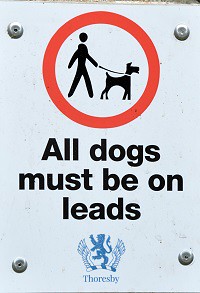 Thoresby Hall Hotel, Sherwood Forest and Clumber Park are recommended attractions for a day trip or short vacation. The
Dukeries area is of keen historic interest. NOTE: Apart from public domain postcards and brochures ALL photographs herein are copyright Ian Gordon Craig, exclusive permission granted to Thoresby Estate for their use elsewhere.
Thoresby Hall Hotel, Sherwood Forest and Clumber Park are recommended attractions for a day trip or short vacation. The
Dukeries area is of keen historic interest. NOTE: Apart from public domain postcards and brochures ALL photographs herein are copyright Ian Gordon Craig, exclusive permission granted to Thoresby Estate for their use elsewhere.
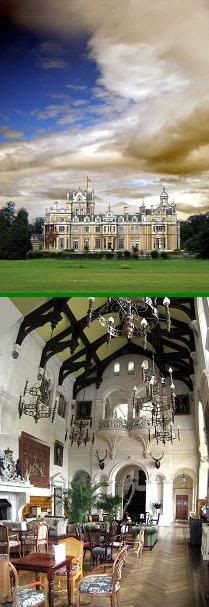 Thoresby Hall as photographed Summer 2009, now a successful Warners Hotel.
Thoresby Hall as photographed Summer 2009, now a successful Warners Hotel.
 Robert Pierrepont (1584 - 1643), 1st Earl of Kingston upon Hull, bought Thoresby for his second son William.
Robert Pierrepont (1584 - 1643), 1st Earl of Kingston upon Hull, bought Thoresby for his second son William.
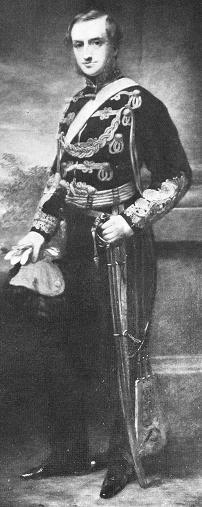 Sydney William Herbert Pierrepont (1825 - 1900), 3rd Earl Manvers, built the present Thoresby Hall, St John's Church,
Perlethorpe School, and generally shaped Thoresby Estate as it looks today.
Sydney William Herbert Pierrepont (1825 - 1900), 3rd Earl Manvers, built the present Thoresby Hall, St John's Church,
Perlethorpe School, and generally shaped Thoresby Estate as it looks today.
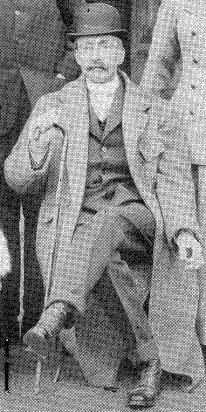 The 4th Earl Manvers (Died 1926).
The 4th Earl Manvers (Died 1926).
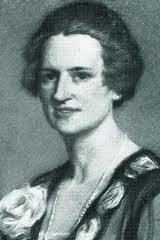 Countess Manvers (d.1984). Examples of her paintings are always on show at Thoresby Gallery.
Countess Manvers (d.1984). Examples of her paintings are always on show at Thoresby Gallery.
 ABOVE: The statue of Robin Hood in the courtyard at Thoresby Hall, by Tussaud - Birt, is showing its age, but remains one of
my favourites. The Art Gallery, crafts shops, and restaurant within that courtyard are recommended.
ABOVE: The statue of Robin Hood in the courtyard at Thoresby Hall, by Tussaud - Birt, is showing its age, but remains one of
my favourites. The Art Gallery, crafts shops, and restaurant within that courtyard are recommended.

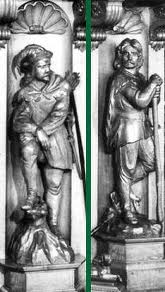
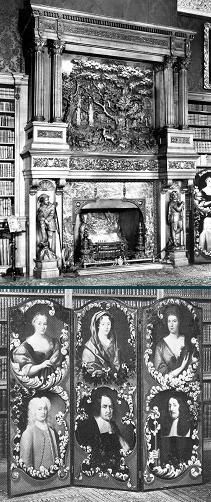 Carved oak fireplace in the Thoresby Hall library with its depiction of the Major Oak (Robin Hood's Tree), and the screen
featuring the Cromwell family. Oliver Cromwell is known to have stayed in Thoresby Hall before the English Civil War.
Carved oak fireplace in the Thoresby Hall library with its depiction of the Major Oak (Robin Hood's Tree), and the screen
featuring the Cromwell family. Oliver Cromwell is known to have stayed in Thoresby Hall before the English Civil War.
 The Green Bridge sited near the edge of the cricket pavilion in front of Thoresby Hall across which the Duke's carriage would take him to Perlethorpe Village.
The Green Bridge sited near the edge of the cricket pavilion in front of Thoresby Hall across which the Duke's carriage would take him to Perlethorpe Village.
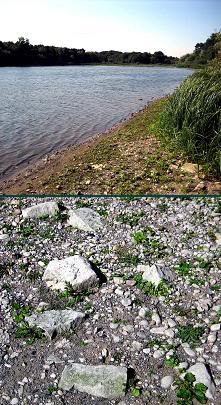 The view along Thoresby Lake towards Budby. Are these bricks at the water's edge remnants from the original Thoresby
Hall?
The view along Thoresby Lake towards Budby. Are these bricks at the water's edge remnants from the original Thoresby
Hall?
 The River Meden winds its way from 7 Ton Bridge near Thoresby Hall towards Perlethorpe Village.
The River Meden winds its way from 7 Ton Bridge near Thoresby Hall towards Perlethorpe Village.
 Budby Castle, once known as William Castle, and the River Meden winding towards Thoresby Lake under the remains of
Pierrepont Bridge, once described as classical and elegant.
Budby Castle, once known as William Castle, and the River Meden winding towards Thoresby Lake under the remains of
Pierrepont Bridge, once described as classical and elegant.
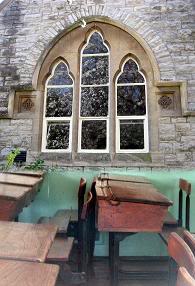
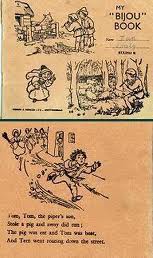 Children's exercise book from the school, 1958.
Children's exercise book from the school, 1958.
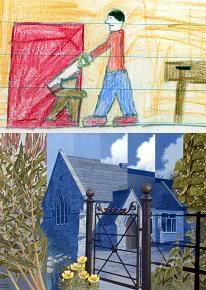
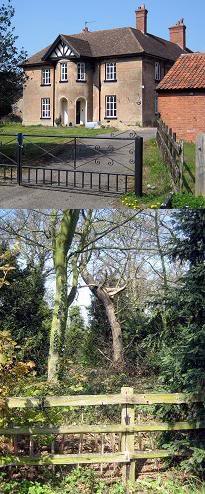



 Perlethorpe Church graveyard, where the original chapel once stood. The covered gate was a later addition in memorium to
the men of Budby and Thoresby who fell in World War 1.
Perlethorpe Church graveyard, where the original chapel once stood. The covered gate was a later addition in memorium to
the men of Budby and Thoresby who fell in World War 1.
 Robin Hood's Tree, the Major Oak, was once under the care and supervision of Thoresby Estate. Responsibility for its
upkeep changed to Nottingham City Council c.1969. Here it is pictured in in Spring, Autumn, and Winter.
Robin Hood's Tree, the Major Oak, was once under the care and supervision of Thoresby Estate. Responsibility for its
upkeep changed to Nottingham City Council c.1969. Here it is pictured in in Spring, Autumn, and Winter.
